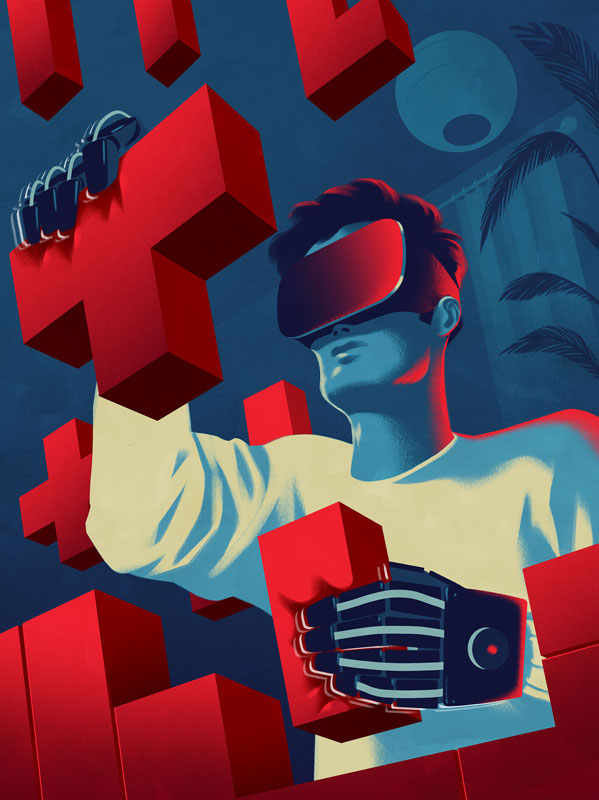A burgeoning haptics sector wants to solve the problem
Virtual reality has been the next big thing for decades. The appeal isn’t hard to understand: the ability to strap on a headset and dive into a different world has the potential to transform everything from retail to entertainment. But while the field has developed considerably over the past ten years, it continues to struggle in the mainstream.
VR is beset by challenges. The headsets remain clunky and expensive; there are still technical problems to solve; and the marketplace has certainly not been helped by a dearth of content. But to Dr. Bob Crockett, co-founder of haptics company HaptX and Professor of Biomedical Engineering at California Polytechnic State University, there’s another more fundamental reason: VR doesn’t sufficiently seize control of the user’s senses. “Even with modern headsets, which have a resolution close to what the eye can detect and a field of vision that goes beyond your line of sight, it’s not immersive enough,” he says.
That’s precisely where haptics, which adds touch to virtual experiences by applying forces, vibrations, or motions, comes in.

You’ve already experienced this technology. When your phone gives you force feedback as you press a key on its touchscreen, or when your smartwatch taps your wrist to alert you to an incoming message – that’s haptics.
But it also encompasses more sophisticated, emerging wearables that can simulate everything from the experience of holding an apple to shaking somebody’s hand. Activity in this space reignited in tandem with the conversation around ‘the metaverse’ – a report by Verified Market Research last year forecast that the global haptics market would grow by 12.1 per cent per year to hit USD6.2 billion by 2028.
A number of headline-grabbing startups have duly emerged. One of the most high profile is Crockett’s HaptX, which has raised USD59.5 million – USD23 million of which in September alone – to develop a range of lightweight, wireless haptics gloves geared towards industrial and academic applications. Major automakers use them for designing systems in virtual reality, while the U.S. army uses them for field medic training.
“Haptics is not just the enabling technology for any truly immersive experience,” says Crockett. “It’s the dividing line between virtual reality as interesting and virtual reality as truly impactful.”
Whereas most haptics companies use electronic actuators that essentially vibrate on top of the skin, HaptX’s approach is all about pressure. Each glove comprises pneumatic exotendons, which brake the fingers’ movement, and 133 tiny balloons that inflate or deflate on the underside of the palm and fingertips.
While this system allows for rapid, high-resolution sensations, the big challenge is the cost. Off-the-shelf components are not up to the task, so the company currently develops its own pneumatic circuitry. A pair of HaptX gloves is commensurately expensive, costing USD5,495. “A system built on pneumatics is inherently complex, but pneumatics is still the best technology for realistic haptics that is scalable across the entire body,” Crockett says. Within the next decade, Crockett expects to see consumer deployment of high-quality haptics such as this happening at physical VR entertainment centres. After that, as the technology becomes more affordable, it may filter into private homes.
During this transition, Crockett believes the range of hardware produced by the haptics industry will grow, because we need more than gloves and vision to create full immersion. One day, he believes we can expect full body systems that also simulate terrain, enabling a user to move about in a virtual world with tactile verisimilitude.
The applications could span everything from controlling humanoid robots in dangerous environments to the performance of a range of remote healthcare tasks. “Given the tremendous, global shortage of registered nurses, the ability to support the development and use of remotely controlled, healthcare-support robots really inspires our team,” he says.
To get to that point, though, he believes the consumer market needs to catch fire – and that depends on big players in gaming and Hollywood creating better haptics-enabled content. “Because as great as virtual worlds in which we can touch and feel objects might sound,” says Crockett, “nobody is going to spend time in them unless there’s a compelling reason to do so.”


